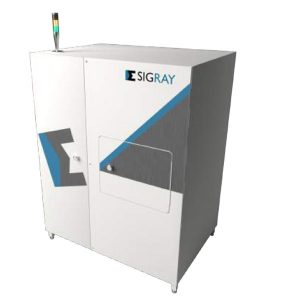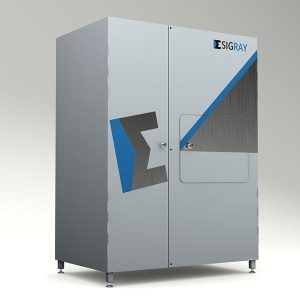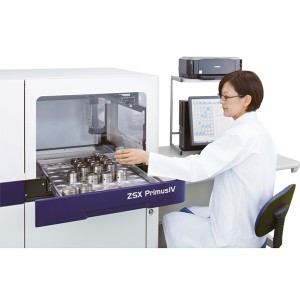QuantumLeap XAS X-Ray Absorption Spectroscopy Electronic and Chemical State Determination
The first laboratory XAS offering synchrotron-like performance
X-ray absorption spectroscopy (XAS) is a powerful chemical analysis technique that can determine the chemical composition and chemical structure of the constituent elements e.g. oxidation state, bond length etc. XAS combines two techniques:
- XANES – X-ray Absorption Near Edge Structure
- EXAFS – Extended X-Ray Absorption Fine Structure
XAS is the measurement of the x-ray absorption coefficient µ(E) is a measure of the X-ray intensity as function of the incident and transmitted X-ray intensity.
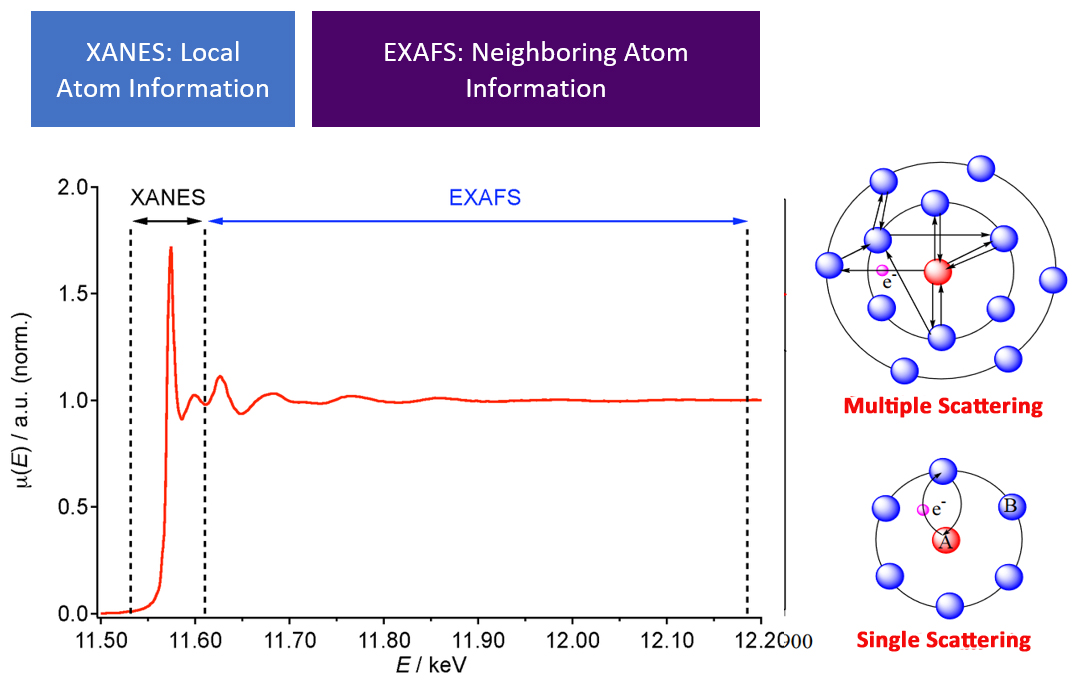 Key Features
Key Features
- Unprecedented ability to analyse electronic (chemical) state of elements
- First lab micro-XANES system, providing spatial resolution down to 100 ?m
- Dual modes:
1. XANES for oxidation state analysis and bond covalency
2. EXAFS for coordination number, types of donors, and interatomic distances
QuantumLeap Laboratory XAS with Synchrotron-Like Performance
The QuantumLeap from Sigray represents a breakthrough in laboratory-scale instrumentation with the ability to achieve synchrotron-like performance without the need to go to a synchrotron. It successfully provides sub-eV high energy resolution XANES and high throughput XANES and EXAFS.
Sigray is able to achieve this level of performance using a host of patented and patent pending technologies including:
- Patented high brightness x-ray source with microfocus spot and produces multiple x-ray spectra
- Patent-pending acquisition technique which switches for XANES and EXAFS, enabled by modern crystal/detector technology
- Proprietary double parabolic high efficiency x-ray optics with cut-off energy
As well as a rethink of the conventional experimental approach.
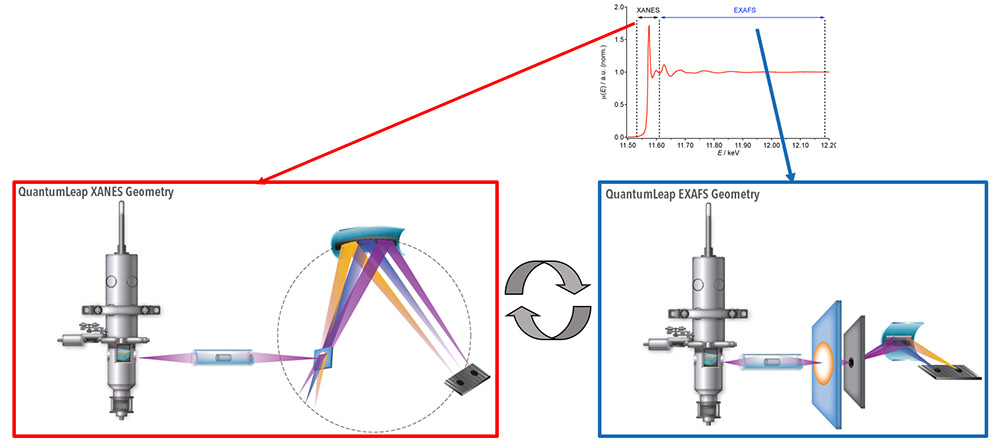 What is XAS?
What is XAS?
X-ray absorption spectroscopy looks at the change in absorption as a function of electronic/chemical states. It involves analyzing the changes in transmission of X-rays at energies near the absorption energy of an element of interest e.g. 8keV for copper.
[insert XAS spectrum graphic]
XANES – X-ray Absorption Near Edge Structure
XANES refers to changes in transmission of X-rays in the region near the absorption edge. These changes are predominantly the result of local atomic scattering. It is also sometimes called Near Edge X-ray absorption Fine Structure (NEXAFS)
It provides information about:
- Chemical/valence states e.g. oxidation state
- Symmetry
- Co-ordination environment
EXAFS – Extended X-Ray Absorption Fine Structure
EXAFS looks at the region immediately above the absorption edge. This region consists of gentle oscillations caused by interference from neighbouring atoms.
[insert EXAFS spectrum]
It provides information about:
- Interatomic distance
- Number of neighboring atoms
- Nature of neighboring atoms (e.g. atomic number)
- Coordination number (number of atoms at specific distance)
Demonstrated Capabilities
Provided below is data generated using the Sigray QuantumLeap that demonstrates its ability to provide high resolution (sub-eV) XANEs and high throughput (within seconds EXAFS). Results for Fe were produced at 0.2eV energy resolution and are in excellent agreement with synchrotron data.
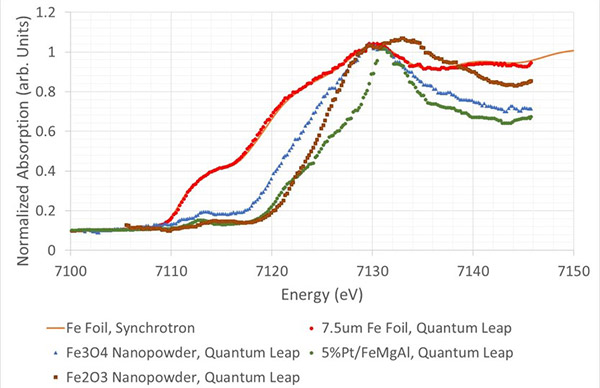 Applications
Applications
XAS is highly relevant to a number of fields including:
- Batteries/fuel cells/solar cells – the oxidation state of transition metals (e.g. in lithium ion batteries) as a function of charge and discharge cycles is of great interest to materials researchers in the energy sector
- Catalysts – chemical states of oxides, nitrides, and carbides with potential applications catalysts
- Nanoparticles and nanomaterials – structural analysis, coordination number, disorder, geometry, reactivity
- Geosciences – Mineralogic determination

